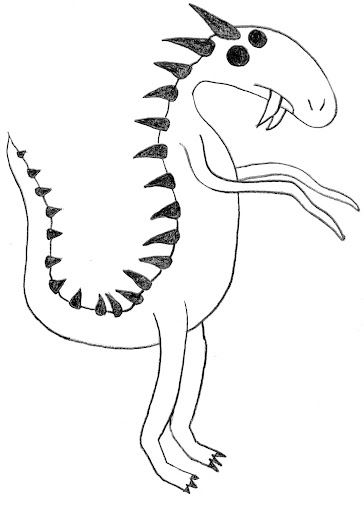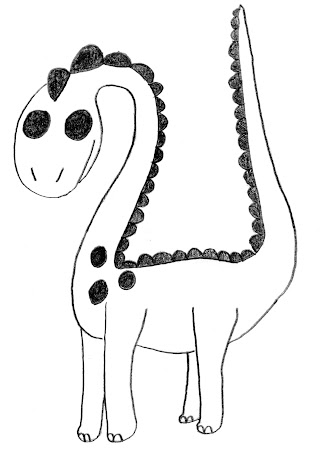This post is part of the Immortal Naturalist's Guide series. The explanation for that series can be found in this post.
People along the Scarlet River tell tales of a bizarre beast that swims in the deepest, widest portions of the river. Despite being a nearly ubiquitous tale in Scarlet River culture, however, not a single person seems capable of giving a clear description, leading me to dub it the Uncertain Creature. Despite the fact that no one seems to know what the creature looks like, all versions of the story agree on its behavior and diet. The Uncertain Creature spends most of its time under the water in calm sections of the river. There the beast sits in wait, snapping up any animals that try to swim by. This poses a danger to any people who swim or boat by, as the Uncertain Creature is apparently quite large and has no issue dragging people under. Due to its size, the Uncertain Creature is unable to go too far upriver, but that means that its attacks, mostly attributed to accidental drownings rather than a folk tale, are concentrated on less than half of the total length of the river, which coincidentally is where more than half of the people living along the river are located. This honestly makes the fact that most people consider it to be nothing more than a legend somewhat shocking, and I suspect it is due to the fact that no one knows what it looks like.
As it turns out, the inability to describe the Uncertain Creature is due to a natural magical effect that causes the creature to appear blurry and amorphous, certainly a useful trait for an ambush hunter. Locally, there are bushes that grow along the river with berries that look like human eyes, called eye bushes. When the berries are crushed and the pulp rubbed on one's eyelids, they grant the ability to see through illusions such as the Uncertain Creature's blurriness. Any other method of seeing through or dispelling illusions ought to work, but failing those, eye bushes are quite common and fruit throughout the year. Looking through the illusion reveals the awkward beast that is the Uncertain Creature, with flippers, a shell, horns, and prehensile whiskers for grabbing prey. Unfortunately, the Uncertain Creature seems to have an innate sense for when something sees through its illusion, triggering it to try to run away from or fight the viewer, depending on how easy each option is in the moment.
Having been attacked and needing to fight off the Uncertain Creature a few times during my observations, I discovered an interesting quality of the beast's blood. After the fights, in which the Uncertain Creature fled after seeing that I could hurt it, I would be splashed with the creature's blood and other people told me I looked a little blurry until I washed off the blood. My theory is that the Uncertain Creature's blood carries its magical ability, and if one were to be completely covered in its blood, they would become indescribable, like the Uncertain Creature. That being said, I believe it would be quite difficult to get useful amounts of blood from the creature without seriously harming it, and I cannot fathom how a temporary magical effect is worth killing the only known creature like this.


















